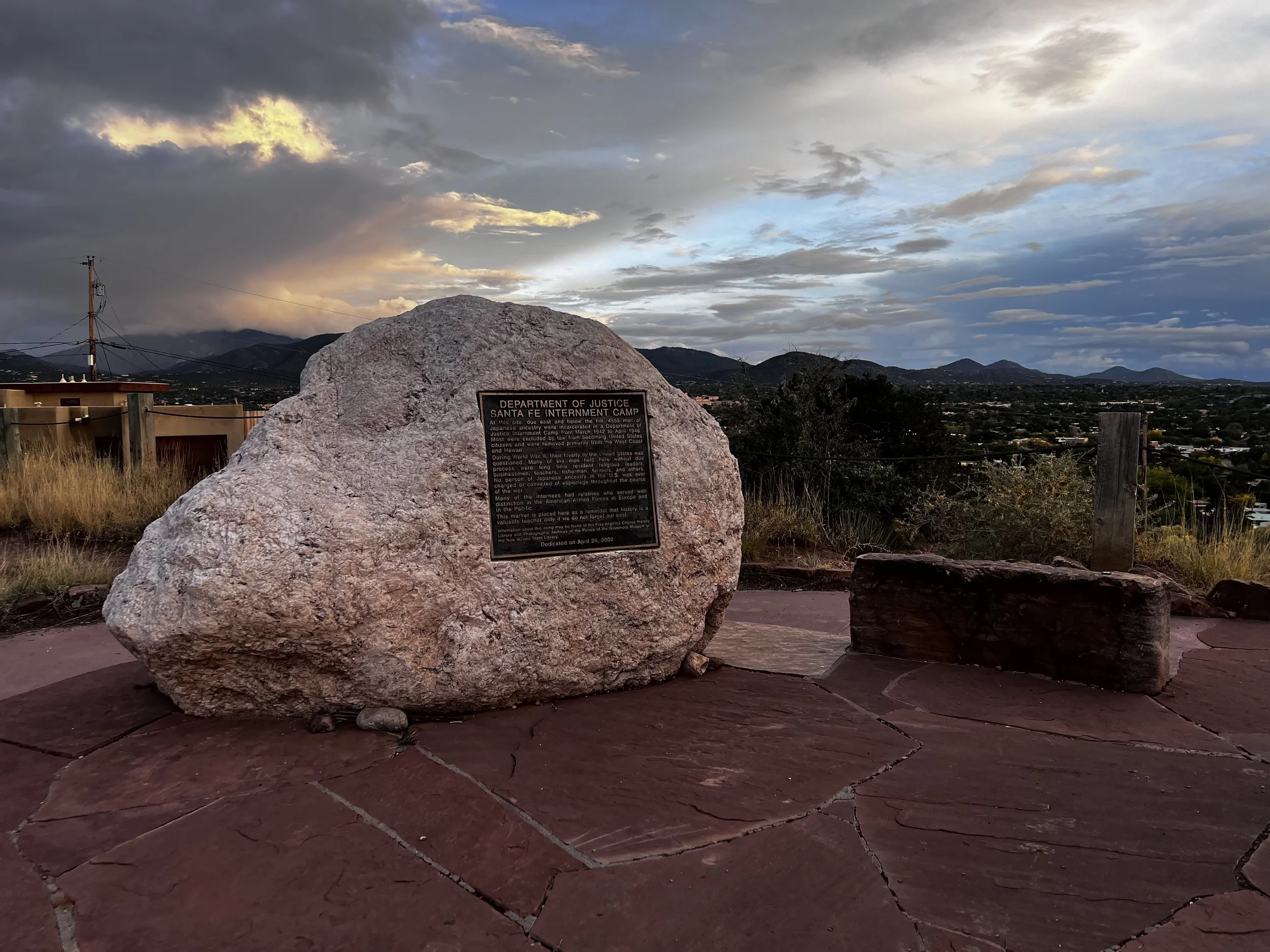Mapping the Unseen
An Interrogation of a Landscape
Mapping the Unseen was a temporary, site-specific installation installed during the fall of 2022 at the marker of the former Japanese prison camp that was located in Santa Fe, NM during the period of WWII.
The installation was conceived as a counter-monument, a construct that comments on or critiques an original monument.
The subtitle “interrogation of a landscape” describes the ambiguous placement of the monument. The “marker” (not referred to as a “monument”) is situated within the grounds of a popular dog park.
Looking in the direction suggested by the plaque on the marker presents a serene, pastoral impression that in some ways makes it more haunting in that it contrasts so vividly with the reality of the prison camp and belies the experiences of degradation and injustice that occurred here.
The concept of the installation was to restore a ghost-like representation of the obscured view. The Yellow outline of the location suggests the barrier tape of a crime scene.
Various images are available of parts of the camp. Many were taken by people who worked there and have been preserved by their family members. But the most pertinent image for this project seemed to be the aerial photograph that was taken after the camp was closed, but before the structures had been demolished. It is an image of ghost town.



